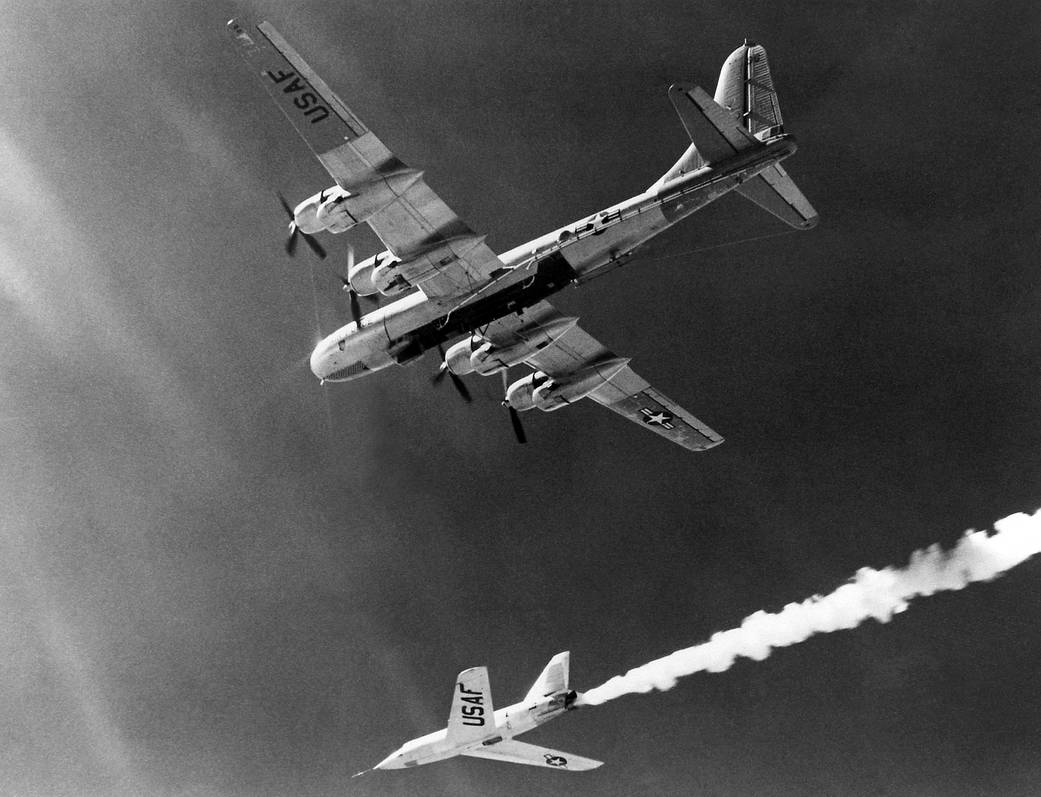E-2820
The Bell Aircraft Company X-2 (46-674) drops away from its Boeing B-50 mothership. Lt. Col. Frank “Pete” Everest piloted 674 on its first unpowered flight on 5 August 1954. He made the first rocket-powered flight on 18 November 1955. Everest made the first supersonic X-2 flight in 674 on 25 April 1956, achieving a speed of Mach 1.40. In July, he reached Mach 2.87, just short of the Mach 3 goal.
The other X-2, 675, was written off prior to making any powered flights. An explosion during a captive flight resulted in the death of Bell test pilot Jean “Skip” Ziegler. The X-2 was jettisoned over Lake Ontario, and the launch aircraft was damaged beyond repair. The first X-2, 674, continued flying, making a total of 17 launches. On 7 September 1956, Capt. Iven Kincheloe became the first man to exceed 100,000 feet when he reached an altitude of 126,200 feet in 674.
The X-2, initially an Air Force program, was scheduled to be transferred to the civilian National Advisory Committee for Aeronautics (NACA) for scientific research. The Air Force delayed turning the aircraft over to the NACA in the hope of attaining Mach 3 in the airplane. The service requested and received a two-month extension to qualify another Air Force test pilot, Capt. Miburn “Mel” Apt, in the X-2 and attempt to exceed Mach 3.
After several ground briefings in the simulator, Apt (with no previous rocket plane experience) made his flight on 27 September 1956. Apt raced away from the B-50 under full power, quickly outdistancing the F-100 chase planes. At high altitude, he nosed over, accelerating rapidly. The X-2 reached Mach 3.2 (2,094 mph) at 65,000 feet. Apt became the first man to fly more than three times the speed of sound.
Still above Mach 3, he began an abrupt turn back to Edwards. This maneuver proved fatal as the X-2 began a series of diverging rolls and tumbled out of control. Apt tried to regain control of the aircraft. Unable to do so, Apt separated the escape capsule. Too late, he attempted to bail out and was killed when the capsule impacted on the Edwards bombing range. The rest of the X-2 crashed five miles away.Circa 1955-1956NASA Photo
2 min read

























